110v-230v AC to Mysensors PCB board
-
Hi all,
**UPDATE April 17 2016 **
The latest version of this board is available HERE.After spending a few months on this forum and a few prototypes later, I decided I wanted to build a small but cheap PCB which could be placed in either the wall behind the light switch, or above the lamp.
Besides the boards I've seen on this forum, I wanted these boards to contain a module to go from 230v AC to 5/3.3v DC in order to power an Arduino nano and the NRF module. I eventually ended up with a PCB which is about 4 by 4.5cm. So with all components attached I'm hoping to get in stuffed in a 5x5x3cm plastic printed case.
Modules which I've used to power the board:
[http://www.aliexpress.com/item/5-pcs-HLK-PM01-AC-DC-220V-to-5V-Step-Down-Power-Supply-Module-Intelligent-Household/32319202093.html?spm=2114.32010308.4.19.8oKfZgUPDATE: 2015/09/18
As promised, I've got an update for this project. The board has been tested in the past week, and everything is working as expected. Compared to the previous board I've posted, I have updated the following:
• Solder pads of LE33CZ have been placed a little wider apart to avoid short circuit while soldering.
• Solder pads of the resettable fuse (Fuse2) has been placed closer together to better fit the fuses of the BOM.
• Moved the NRF24L01 connector a bit away from the solid state relay. Should make it easier to solder.
• Moved Fuse2 to another location on the board, away from the 230v circuit.Some 3D pictures (Top and bottom):
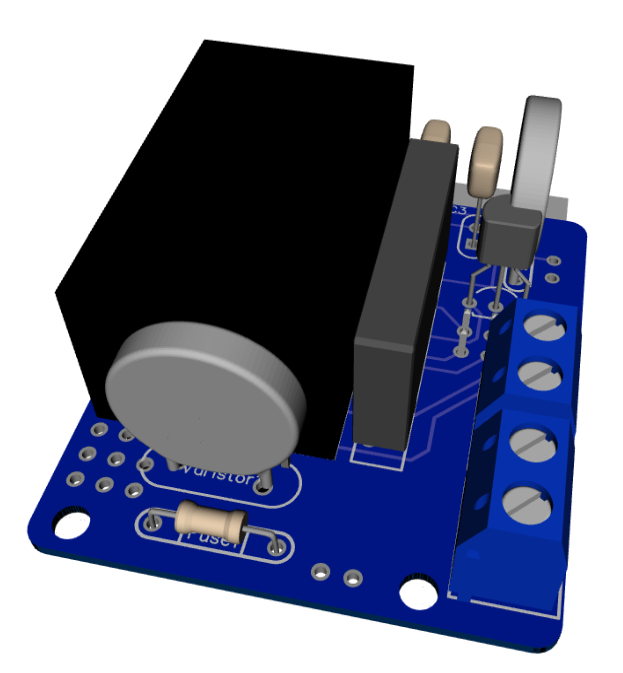
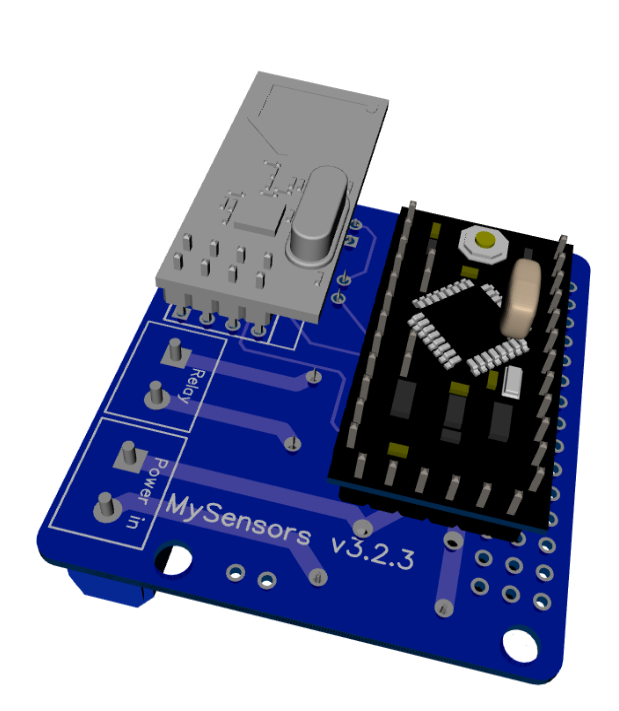
Anyone who is interested can order the PCB HERE
Some documentation, complete list of required components and all gerber / DipTrace files (in case you would like to make some modifications) can be found here: MySensors board v3.2.3.zip.
OK, this may be a really dumb question, but I need to ask, so please pardon my ignorance....
Clearly one main advantage of this is to control traditional light switches programatically and also through the standard light switch. How would I know whether someone flipped the light switch to turn on/off? How does the program "state" keep in sync with the "state" of the physical light switch?
Sorry again about what might be a rather dumb question.
-
You could connect the regular switch like a binary button, for example between D3 and Grd. The node could monitor both incoming messages from the controller and the state on D3.
-
@korttoma Say what...? You measure .4 ohms on your Varistor? I think you found your problem. :angry:
I have only ever used Varistor protection on the primary side, so I've got no experience with low voltage Varistors, but I don't think it should ever read .4.. Should be infinite.
@ServiceXp said:
@korttoma Say what...? You measure .4 ohms on your Varistor? I think you found your problem. :angry:
I have only ever used Varistor protection on the primary side, so I've got no experience with low voltage Varistors, but I don't think it should ever read .4.. Should be infinite.
I how received a new batch from another seller and these varistors show infinite resistance, unfortunately they are 0603 footprint so they are really tiny.
I bet the other seller (Unionup Electronic Mall) just sent me random crap because all of them show 0 resistance at first and then increase to 0.4 ohms, to bad it is too late to open dispute now. Just stay clear of Unionup Electronic Mall in the future.
-
is it the brown or blue varistors that is defective?
Edit: sorry the brown ones are fuses
-
is it the brown or blue varistors that is defective?
Edit: sorry the brown ones are fuses
@Cliff-Karlsson the 5.5V SMD varistors I recieved from Aliexpress seller "Unionup Electronic Mall" do not work for me. Now running my circuit with out it instead.
-
@ServiceXp said:
@korttoma Say what...? You measure .4 ohms on your Varistor? I think you found your problem. :angry:
I have only ever used Varistor protection on the primary side, so I've got no experience with low voltage Varistors, but I don't think it should ever read .4.. Should be infinite.
I how received a new batch from another seller and these varistors show infinite resistance, unfortunately they are 0603 footprint so they are really tiny.
I bet the other seller (Unionup Electronic Mall) just sent me random crap because all of them show 0 resistance at first and then increase to 0.4 ohms, to bad it is too late to open dispute now. Just stay clear of Unionup Electronic Mall in the future.
-
I don't have any ceramic capacitors. Can I replace them with regualr ones?
-
Nevermind the capacitor question I found some ceramic capacitors now. But Is the "BOM" that shows component placement in the beginning of the thread accurate? only the transistor needs to be turned around?
-
@bjornhallberg said:
@m26872 You're probably right, I just followed the BOM. I'll see if I
I think the first post should be edited with the right components. In the doc it says
100nF + 100pF Capacitors 0.02 Euro AliExpress Link
but in the post is says:C2 100uF capacitor
I have a couple of 100uF 16v but I guess that wont work, correct?
-
Sorry for spamming but regarding fuse 2. Can someone post a link to a fuse that works well. I got alot of those brown PTC fuses but the holes in the PCB are too small. I tried drilling them up but then I got no contact so I had to solder a separate separate wire from 5v to the fuse to get any power to the arduino and the rest of the components.
Or has there been a mistake on my PCB with too small holes for fuse 2?
-
Sorry for spamming but regarding fuse 2. Can someone post a link to a fuse that works well. I got alot of those brown PTC fuses but the holes in the PCB are too small. I tried drilling them up but then I got no contact so I had to solder a separate separate wire from 5v to the fuse to get any power to the arduino and the rest of the components.
Or has there been a mistake on my PCB with too small holes for fuse 2?
@Cliff-Karlsson the holes for Fuse2 are to smal and this has been mentioned a few times before in this thread. I drilled mine out with a 0.8mm drill and could then use the recommended fuse without any extra wires.
-
Since the 5.5V varistor is not available from the linked AliExpress shop I wonder whether this varistor would work as well?
https://www.conrad.de/de/smd-varistor-we-vs-82537040-4-v-wuerth-elektronik-we-vs-82537040-1-st-1086820.html -
greeted everyone
look what concerns island link tests on this HLK-PM01
http://lygte-info.dk/review/Power Mains to 5V 0.6A Hi-Link HLK-PM01 UK.html -
A question about the fuses. The BOM in the Word document links to two 230V fuses, the PTC and slow blow fuse. If I read the schematic correctly one fuse is on the AC side and one is on the DC side. How does a 230V fuse help on the DC side where there should not be more than 5Vdc? Or am I missing something? As I'm quite new to this I'm probably not reading the schematic correctly or missing something :-)
-
For those who wanted to see some pictures of the board:
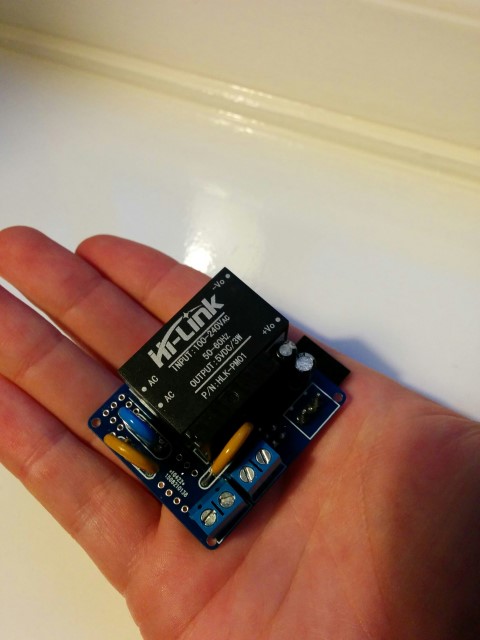
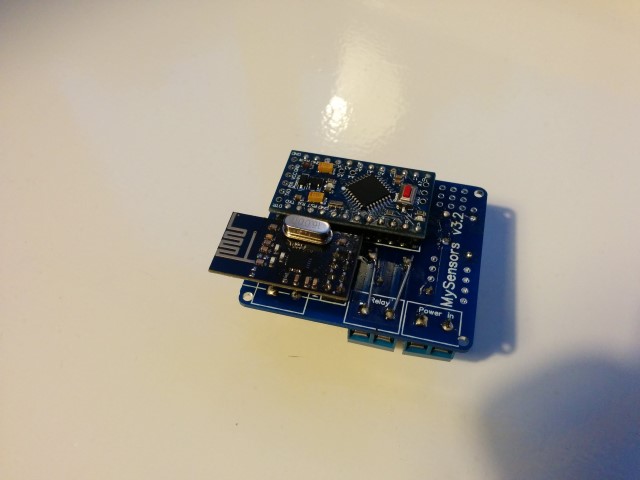
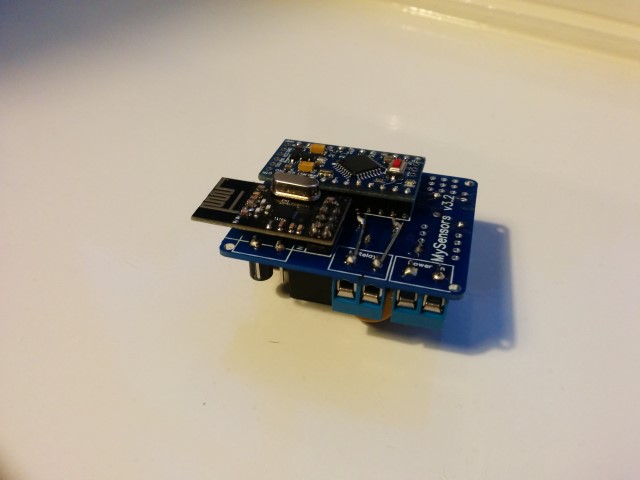
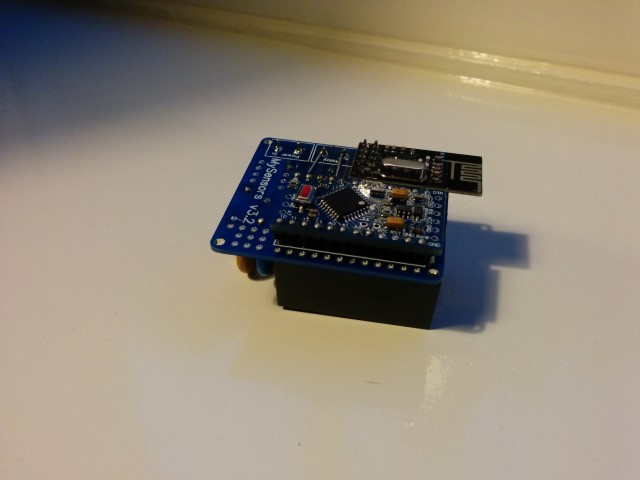


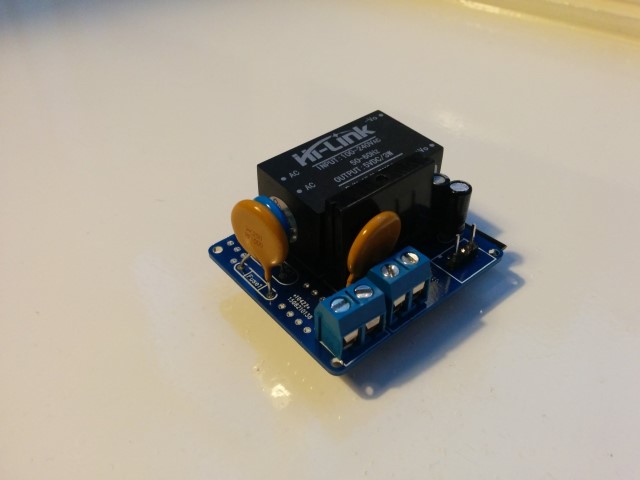
Small notice: These pictures are of a slightly older design. The newer design has a few minor changes like better component placement and a permanent fuse instead of this resettable fuse. But these pictures should at least give you an idea on how everything looks like, and shows how really small it actually is.
Also, I reinforced the traces of the 230v lines, which I absolutely recommend to do! (Although I do recommend to do it slightly more professional than I did on this prototype :))@aproxx said:
For those who wanted to see some pictures of the board:







Small notice: These pictures are of a slightly older design. The newer design has a few minor changes like better component placement and a permanent fuse instead of this resettable fuse. But these pictures should at least give you an idea on how everything looks like, and shows how really small it actually is.
Also, I reinforced the traces of the 230v lines, which I absolutely recommend to do! (Although I do recommend to do it slightly more professional than I did on this prototype :))I really like this design, but it would be even nicer when this fits a ESP8266 :) Maybe the PCB could be even smaller . And it works together with link text .
So is there maybe one of the PCB designer guys who can build /draw / design this 230v to ESP8266 PCB ? -
WOW, REALLY GREAT JOB!
-
Hello everyone,
This is a gr8 project, i am looking forward to make few sensor for my home. As i don't have any experience with electronics and very new to all these terms and components.
I would request anyone of you to, kindly post some pictures of the board with components in place that i can copy and make my boards.
**Specially 3 pin regulator and Capacitors **My first assembled board is not working, it looks like m doing something wrong with either the capacitors or the regulator. I checked my NRF24l01 VCC pin and not getting any voltage at all.
Please help me guys......
Thanks and Regards
Brij -
Hello everyone,
This is a gr8 project, i am looking forward to make few sensor for my home. As i don't have any experience with electronics and very new to all these terms and components.
I would request anyone of you to, kindly post some pictures of the board with components in place that i can copy and make my boards.
**Specially 3 pin regulator and Capacitors **My first assembled board is not working, it looks like m doing something wrong with either the capacitors or the regulator. I checked my NRF24l01 VCC pin and not getting any voltage at all.
Please help me guys......
Thanks and Regards
Brij@Brijesh-Mishra said:
I would request anyone of you to, kindly post some pictures of the board with components in place that i can copy and make my boards.
@the-cosmic-gate has already posted images above.
Perhaps you should post a picture of what you've done?
